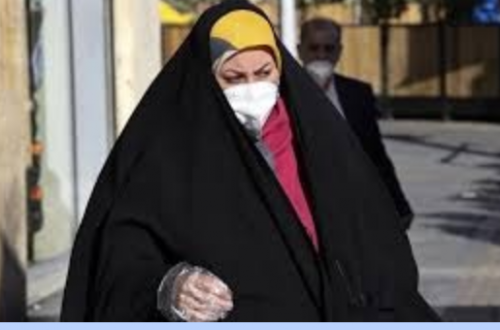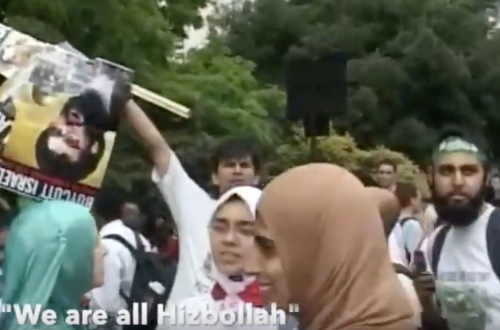This is part 2 of a three part guest post by David Patrikarakos. Part 1 may be read here. Part 2 may be read here.
Rafsanjani’s premiership had ushered in an age of increased pragmatism. Nonetheless, while he had addressed structural problems in the political system, or tried to at least, wider societal ills went unresolved. State restrictions on freedom of speech, prisoner abuses and freedom of the press were all left untouched by the temperamentally conservative President. After Rafsanjani had served his constitutionally-mandated maximum of two terms, many within the country, especially the youth, looked to his successor to liberalize society.
In May 1997, Muhammad Khatami, an obscure cleric running on a reformist ticket, won the presidency. With a voter turnout of almost 80%, and despite very limited TV coverage (which heavily favoured the conservative candidate, Speaker of Parliament, Ali Akbar Nateq-Nouri) he received 70 per cent of the vote. The people wanted change.
The importance of Khatami’s coming cannot be underestimated. The date of his election, on the 2nd of Khordad, 1376 in the Iranian calender, has been enshrined into national myth as the start of the age of reform in Iran. His followers – a baggy assemblage of the young, leftsts, women etc. – the usual suspects – as well as those in the business community that sought a more open economy, were collectively known as the “2nd Khordad Movement.”
Most immediately, he wanted to open things up domestically. Whereas the previous government had allowed only ten newspapers, the late ’90s saw a mushrooming of news. Long suppressed, everyone in Iran, it seemed, had an opinion. Around twenty newspapers hit the streets – magazines and periodicals with an array of criss-crossing opinion jabbered and pointed at one another on the shelves.
The previously overworked censors at the Ministry of Culture and Islamic Guidance found themselves with less to do. Poets and novelists found it easier to get into print, and those that had become used to seeing their work struck off on Islamic grounds found that re-submitting old manuscripts bore fruit. A new vibrancy was in the air.
Khatami also knew that Iran was suffering on the international stage; Rafsanjani had not managed to remedy this. Rejecting the notion of a “Clash of Civilizations”, he instead proposed a “Dialogue of Civilizations,” appearing on CNN to extend a cautious hand of friendship to the US (drawing considerable internal fire from government hardliners in the process). He met with many world leaders, including the Pope, and the leaders of France and Russia. In 2003 he draw yet more criticism for refusing to meet the Shia cleric Moqtada al-Sadr.
And yet more overtures followed. During 2001’s US Operation Enduring Freedom, Iran, through intermediaries, agreed to send rescue parties to search for any US pilots shot down over Afghanistan; it also handed over captured al-Qaeda suspects to Saudi Arabia (who passed either them or the relevant information along to the Americans). Its reward for all of this? A place in the ‘Axis of Evil.’
This of course delighted the hardliners, who had always warned of the folly of trying to reason with the Great Satan. They had, naturally, been proved right. Those within the regime hostile to Khatami and his goals increased in strength, and his reforms were stymied in all directions.
Khatami’s movement ended in failure. At the end of his second term, he published a 47-page “letter for the future”, in which he said his government had stood for noble principles. It had made mistakes, but had been obstructed throughout by those within the establishment resistant to change. The Iranian youth was demoralized and tired. Their shining light had failed. The reinvigorated conservatives and the Revolutionary Guard swept Ahmadinejad to power.
***
Thirty years on from that day in February 1979: Iran is still ruled by clerics; it still remains defiant; and it still terrifies the world – now on a nuclear level. Iran and the US have had no had formal relations for thirty years, but they have retained an almost mythical presence in each other’s political life. On the one hand: the Great Satan; on the other: the Mad Mullahs. It is a time to be wary.
But it is also a time to remember. To remember that over the past fifty years Iran has had far better relations with the West, and Israel, than many of its Arab neighbours. To remember that it is the closest thing to a democracy is the Islamic Middle East; to remember that it is rich in human capital as well as energy. And to remember, above all, that it is young. Two-thirds of the country are under 30, and they are more concerned with MTV than the Mullahs. They want their satellite TV and their Western clothes and their freedoms. And Iran is the only country in the world where I have been asked to teach someone how to speak English in an American accent.
Iran should have been our closest Islamic ally in the Middle East, and it could be again. Forget the ramblings of Ahmadinejad – who is considered a joke by many within the country, anyway. Remember Khatami and his dialogue of civilizations, his reforms, and the offer of friendship he extended to Washington, which was rebuffed.
On 8 February 2009, Muhammad Khatami announced his decision to stand again for President. If he wins, we may have, once again, an Iranian President willing to ‘unclench Iran’s fist.” In Washington, it looks like we have a US President ready, finally, to open America’s palm. A handshake that could benefit us all.


